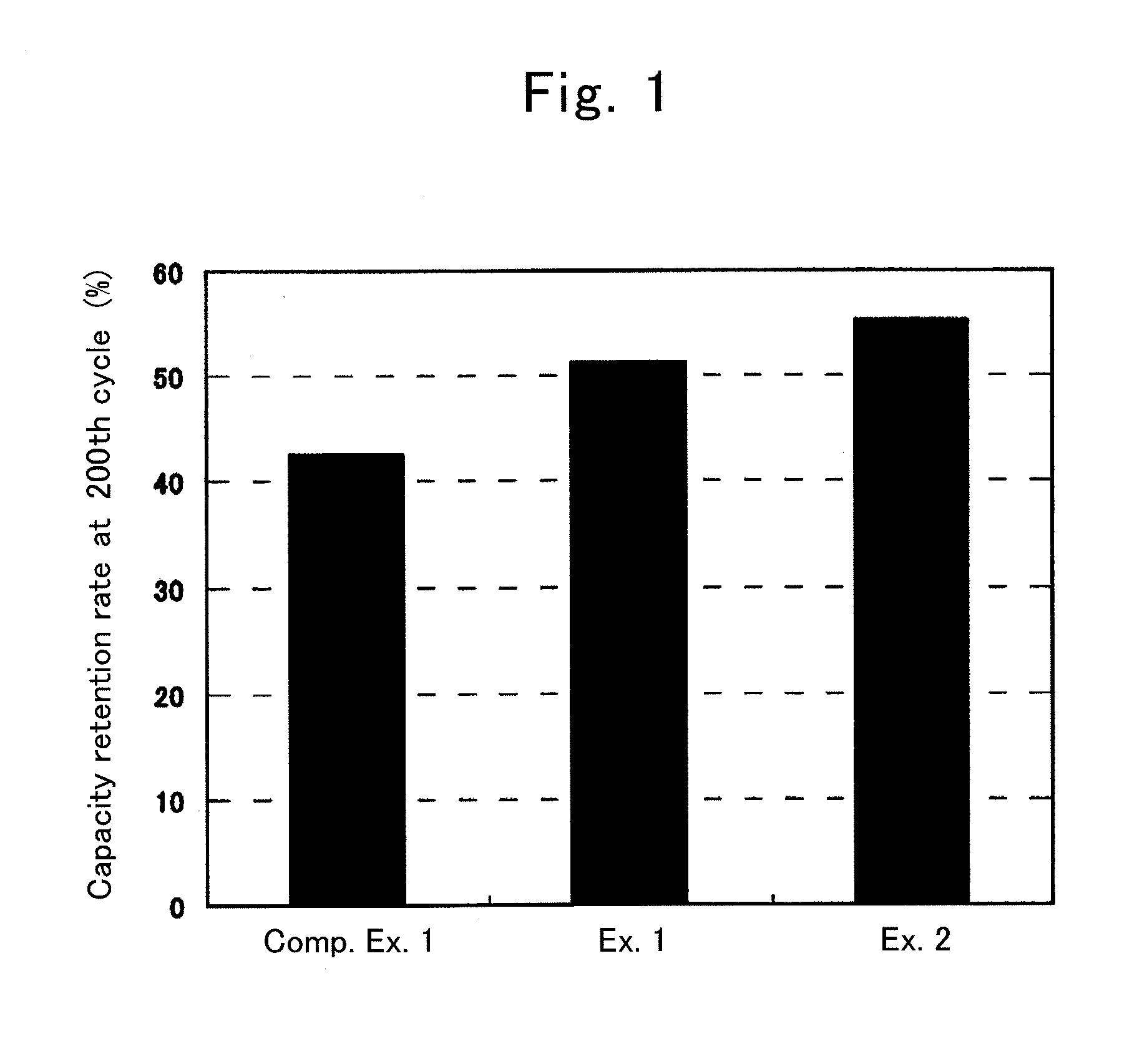Negative electrode for nonaqueous secondary battery, method for producing the same, and nonaqueous secondary battery
- Summary
- Abstract
- Description
- Claims
- Application Information
AI Technical Summary
Benefits of technology
Problems solved by technology
Method used
Image
Examples
example 1
[0049]A mixed slurry was prepared so as to contain 94 parts by mass of LiNi0.5Co0.2Mn0.3O2 as a positive electrode active material, 3 parts by mass of acetylene black (AB) as a conductive assistant, and 3 parts by mass of polyvinylidene difluoride (PVDF) as a binder. The mixed slurry was applied on a surface of an aluminum foil (a current collector) by using a doctor blade and dried, thereby forming a positive electrode active material layer having a thickness of about 40 μm. Then the aluminum foil having the positive electrode active material layer was dried in vacuum at 120 deg. C. for 12 hours, thereby obtaining a positive electrode.
[0050]First, SiO powder (produced by Sigma-Aldrich Japan, average particle size: 5 μm) was subjected to heat treatment at 900 deg. C. for 2 hours, thereby preparing SiOx powder having an average particle size of 5 μm. This heat treatment causes homogeneous solid silicon monoxide SiO in which a ratio of S to O is approximately 1 to 1 to be separated in...
example 2
[0055]Another lithium ion secondary battery was produced by a similar method to that of Example 1, except for employing a nonaqueous electrolytic solution prepared by further adding 4% by mass of fluoroethylene carbonate (FEC).
PUM
 Login to View More
Login to View More Abstract
Description
Claims
Application Information
 Login to View More
Login to View More - R&D
- Intellectual Property
- Life Sciences
- Materials
- Tech Scout
- Unparalleled Data Quality
- Higher Quality Content
- 60% Fewer Hallucinations
Browse by: Latest US Patents, China's latest patents, Technical Efficacy Thesaurus, Application Domain, Technology Topic, Popular Technical Reports.
© 2025 PatSnap. All rights reserved.Legal|Privacy policy|Modern Slavery Act Transparency Statement|Sitemap|About US| Contact US: help@patsnap.com

